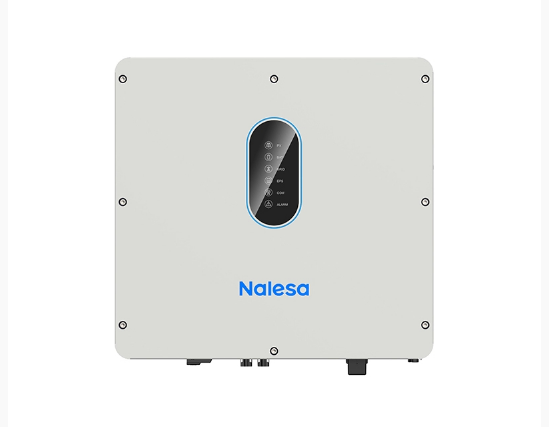What is a Hybrid Inverter & how does it work?
A hybrid inverter, also known as a multi-mode inverter or bidirectional inverter, is a crucial component in renewable energy systems, particularly those that combine solar power with energy storage systems like batteries. It plays a central role in efficiently managing the generation, consumption, and storage of electricity. In this detailed explanation, we will explore what a hybrid inverter is, how it works, and its key features.
What is a Hybrid Inverter?
A hybrid inverter is an advanced electrical device designed to convert direct current (DC) electricity into alternating current (AC) and manage the flow of electricity between different sources and loads. Unlike traditional grid-tied inverters that are designed solely for converting DC electricity from solar panels into usable AC electricity, hybrid inverters are versatile and can operate in various modes:
1. Grid-Tied Mode: In this mode, the hybrid inverter operates just like a regular grid-tied inverter. It converts DC electricity from solar panels into AC electricity and feeds it directly into the electrical grid. If the solar production exceeds the electricity consumption of the premises, the excess power is exported to the grid, often resulting in credits or compensation.
2. Off-Grid Mode: In off-grid mode, the hybrid inverter functions as the primary source of power. It converts DC electricity from solar panels into AC electricity for immediate use and also charges a battery bank. The stored energy in the batteries can be used during periods of low solar generation or when the grid is unavailable, providing a reliable power supply.
3. Hybrid Mode: In hybrid mode, the hybrid inverter combines the capabilities of both grid-tied and off-grid operation. It manages the flow of electricity among the solar panels, battery storage, loads, and the grid to optimize self-consumption, reduce reliance on the grid, and provide backup power when needed.
How Does a Hybrid Inverter Work?
The operation of a hybrid inverter involves several key components and stages:
1. Solar Panels:
The hybrid inverter is connected to solar panels, which generate DC electricity when exposed to sunlight. The amount of electricity produced depends on factors like solar irradiance and panel orientation.
2. Battery Storage:
In hybrid systems with energy storage, the hybrid inverter is also connected to a battery bank. When the sun is shining and the solar panels produce more electricity than is immediately needed, the excess power is used to charge the batteries. This energy is stored and can be tapped into when solar production is insufficient or during power outages.
3. AC Loads:
The hybrid inverter is connected to the electrical loads within a home or business. It supplies AC electricity to power lights, appliances, and other devices.
4. Grid Connection:
The hybrid inverter is connected to the electrical grid. This connection allows the inverter to interact with the grid in various ways, such as exporting excess energy, importing energy when needed, or even disconnecting from the grid during outages (in off-grid mode).
The operation of a hybrid inverter involves sophisticated control algorithms that continuously monitor the energy flows and make decisions to optimize energy usage and storage. Here's a step-by-step explanation of how a hybrid inverter works:
1. Solar Energy Conversion:
When sunlight hits the solar panels, they generate DC electricity. The hybrid inverter converts this DC electricity into AC electricity that can be used to power the electrical loads within the premises. Any excess energy is used to charge the batteries.
2. Prioritizing Self-Consumption:
The hybrid inverter aims to prioritize self-consumption of solar energy. It ensures that as much of the electricity generated by the solar panels is used within the premises before exporting any surplus to the grid. This reduces reliance on grid electricity and maximizes savings.
3. Battery Charging:
If the solar panels produce more electricity than is immediately consumed, the surplus energy is directed towards charging the battery bank. The batteries store this energy for later use.
4. Load Support:
During periods when solar generation is insufficient to meet the load requirements, such as at night or on cloudy days, the hybrid inverter draws electricity from the battery bank to support the loads. This ensures a consistent power supply and reduces grid dependence.
5. Grid Interaction:
In hybrid mode, the hybrid inverter continuously communicates with the grid. It can import electricity from the grid when solar generation and battery capacity are insufficient to meet the load, and it can export excess energy to the grid when available. This interaction helps balance supply and demand and can result in net metering credits or compensation.
6. Grid Disconnect (Off-Grid Mode):
In off-grid mode, the hybrid inverter completely disconnects from the grid and relies solely on solar generation and battery storage to meet the load requirements. This mode provides energy independence but requires sufficient battery capacity to cover extended periods without sunlight.
7. Grid Reconnect (Hybrid Mode):
In hybrid mode, the hybrid inverter can reconnect to the grid during power outages or when the battery is depleted. This ensures continuous power supply and allows for recharging the battery from the grid if necessary.
8. Monitoring and Control:
Most hybrid inverters come equipped with monitoring systems that provide real-time data on energy production, consumption, battery status, and grid interactions. Users can access this information remotely and make adjustments to the system settings as needed.
Conclusion
A hybrid inverter is a versatile device that plays a pivotal role in modern renewable energy systems. It enables efficient energy management by seamlessly integrating solar panels, batteries, electrical loads, and the grid. Whether you aim to achieve energy independence, reduce electricity costs, or enhance backup power capabilities, a hybrid inverter can be a valuable addition to your sustainable energy solution.
If you want to know more information about hybrid inverter, please click on the image below to get a free quote:





